Process Groups Back
- a process is a series of actions directed toward a particular result.
1. Five processes
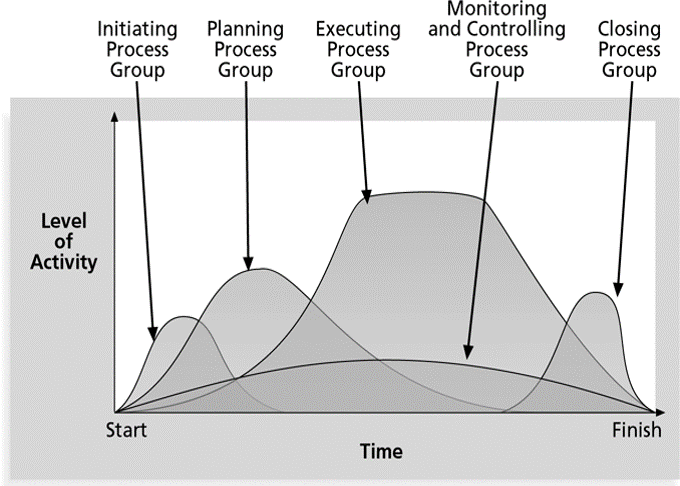
- Initiating Processes: to initiate a project
- developing a project charter(憲章) which includes key project information and stakeholder signatures(署名):
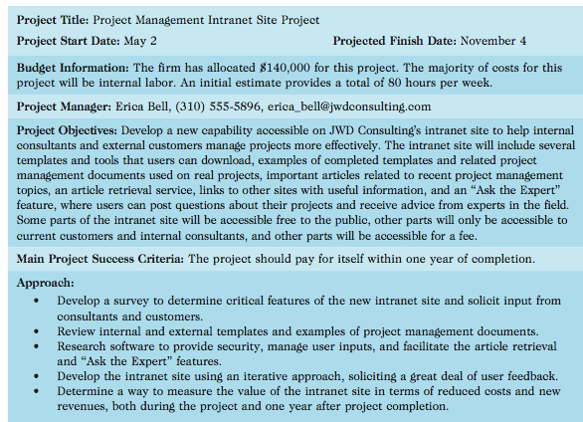

- identifying stakeholders, and having the stakeholders registers:
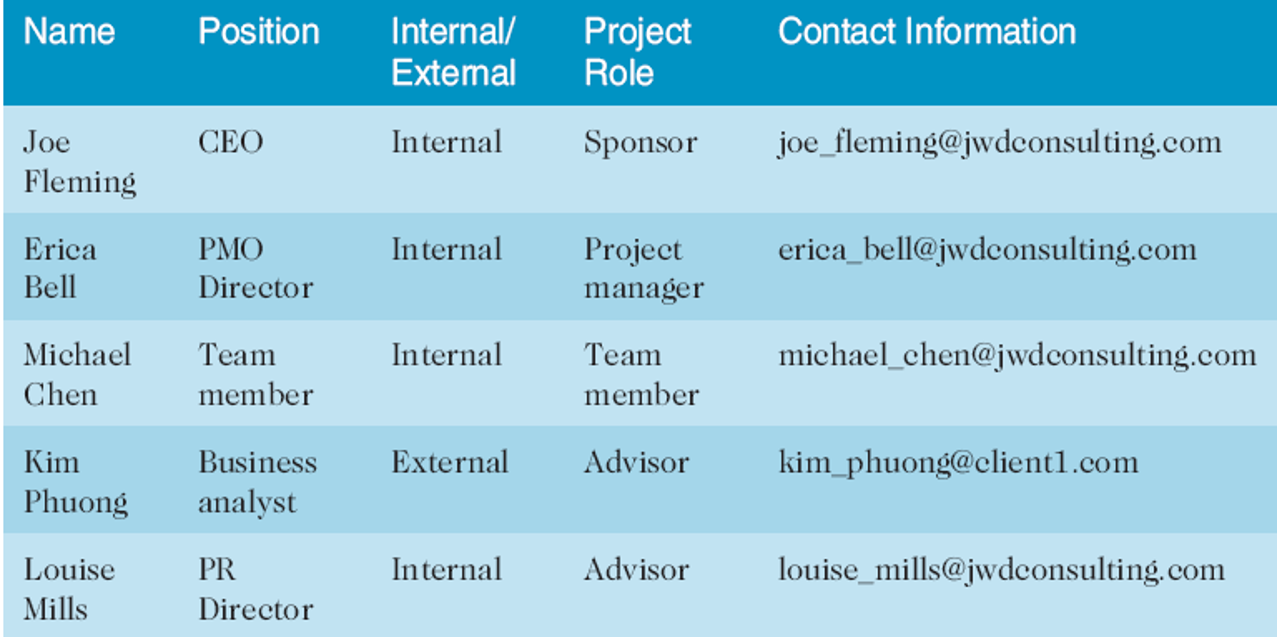
- starting a kick-off meeting(啟動會議), and the agenda is shown as follow:
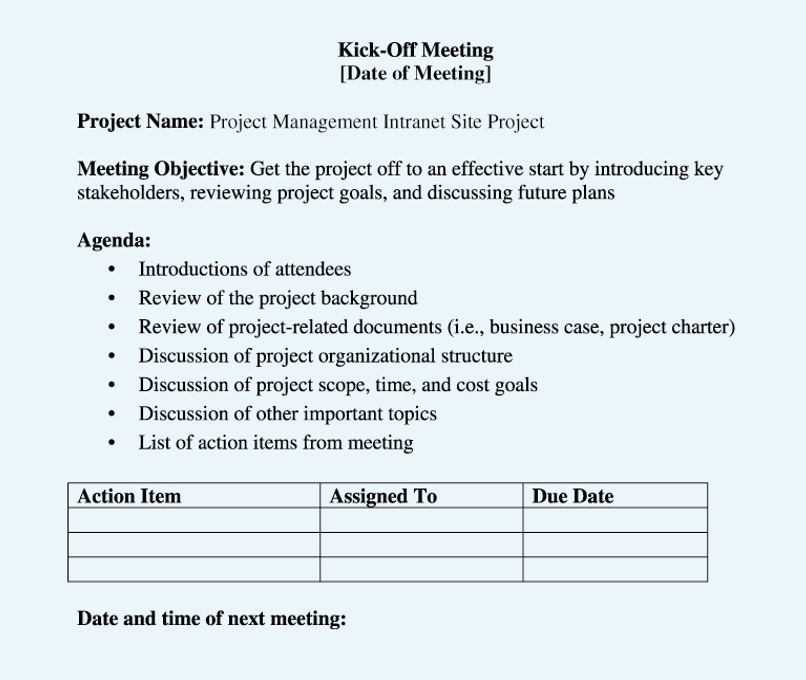
- developing a project charter(憲章) which includes key project information and stakeholder signatures(署名):
- Planning Processes: to plan how to complete the project
- key ouputs:
- a team contract(合同)
- a projec scope statement
- a Work Breakdown Structure(WBS)
- a project schedule(Gantt Chart)
- a list or prioritized risks
- key ouputs:
- Executing Processes: to execute the plan
- a milestone report can be helpful:

- a milestone report can be helpful:
- Monitoring and Controlling Processes: to monitor and control the whole processes
- outputs:
- performance reports
- change requests
- updates o various plans
- outputs:
- Closing Processes: to close the project
- outputs:
- project files
- lessons-learned(經驗教訓) reports
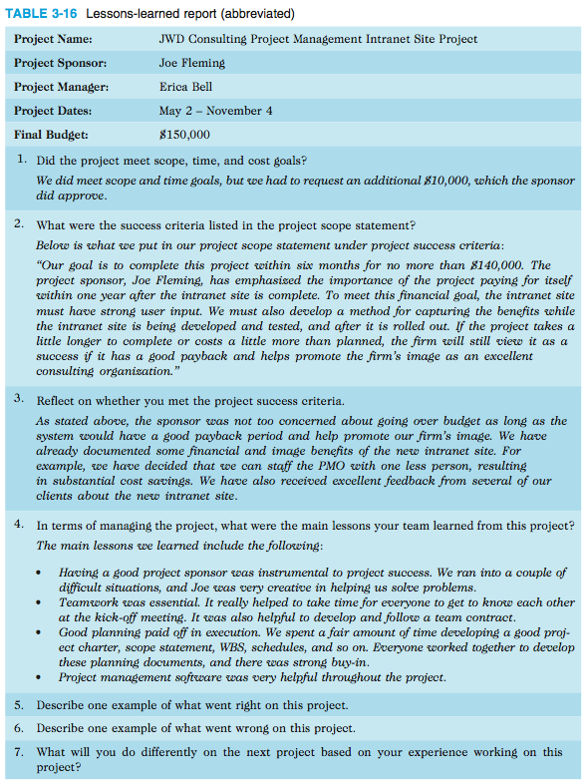
- part of organizational process assets(資產)
- outputs:
- Alpha project managers will spend more time on Planning.

2. Process Groups and Knowledge Area Mapping

3. Methodology

- a methodology: to describe how things should be done
- a standard: to describe what should be done
- PRINCE2, Agile, RUP and Six Sigma provide different project management methodologies.
- PRINCE2: defines 45 separate sub-processes and organizes these into 8 process groups as follows:
- Starting up a project
- Planning
- Initiating a project
- Directing a project
- Controlling a project
- Managing product delivery
- Managing stage boundaries
- Closing a project
- Rational Unified Process(RUP):
- Business Modelling
- Requirements
- Analysis & Design
- Implementation
- Test
- Deployment
- PRINCE2: defines 45 separate sub-processes and organizes these into 8 process groups as follows:
4. Business Case(商業論證)
- a business case is to capture the reasoning for initiating a project or task. It should include information as follow:
- Introduction/background
- Business objective
- Current situation and problem/opportunity statement
- Critical assumptions and constraints
- Analysis of options and recommendation
- Preliminary(初步的) project requirements
- Budget estimate and financial analysis
- Schedule estimate
- Potential risks
- Exhibits
5. Scrume Documenting
- roles:
- Product Owner
- ScrumMaster(PM)
- Scrum Team or Develoment Team
- artifacts
- Product Backlog: a list of features prioritized by business value.

- Sprint Backlog: the highest-priority items from the product backlog to be completed within a sprint.

- Burndown Chart(竣工情況圖): a chart to show the work situation within in a sprint on a day-by-day basis.
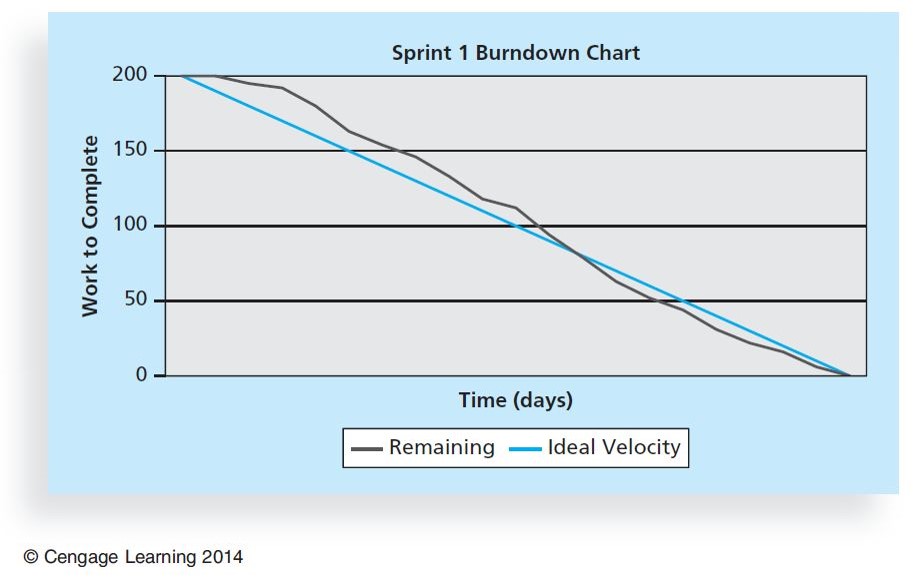
- Product Backlog: a list of features prioritized by business value.
6. Q&A
- Which processes include devising and maintaining a workable scheme to ensure that the project addresses the organization's needs?
- Initiating
- Executing
- Planning
- Monitoring and controlling
answer: Planning.
- The project integration management knowledge area maps to the which process group through the activities of developing project charters?
- initiating
- executing
- planning
- monitoring and controlling
answer: initiating.
- The project cost management knowledge area maps to the which process group through the activities of estimating costs and budget determination?
- initiating
- executing
- planning
- monitoring and controlling
answer: planning.
- What is an iterative software development process that focuses on team productivity and delivers software best practices to all team members?
- Agile Unified Process
- Rational Unified Process
- Dynamic Systems Development Method
- Six Sigma
answer: RUP.
- One of the main outputs of the initiation process is what?
- creating the work breakdown structure
- developing the project charter
- selecting the project manager
- identifying the project sponsor
answer: developing the project charter.
- Which provides a basis for creating the project schedule and performing earned value management for measuring and forecasting project performance?
- scope statement
- work breakdown structure
- cost management plan
- project charter
answer: WBS.
- Which are an output of the executing process of project integration management.
- Deliverables
- Resource calendars
- Issue logs
- Enterprise environmental factor updates
answer: Deliverables.
- Which of the following project parameters would be compatible with the use of the agile approach?
- Projects with inexperienced and dispersed teams
- Projects with clear-up front requirements
- Projects that have a fairly rigid completion date
- Projects that have more flexible scheduling
answer: Projects that have more flexible scheduling.
- The improvement of the product and process in the Scrum method is discussed at the what?
- sprint reflection meeting
- kick-off meeting
- sprint review meeting
- daily Scrum meeting
answer: sprint reflection meeting.
- A what is usually not necessary to the Scrum method.
answer: team contract.